Mississippi - Columbus - Part 1
Columbus - Driving Tour Part 1
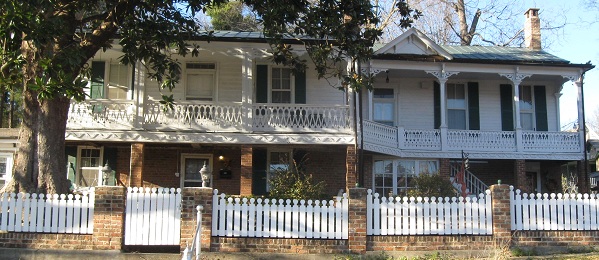
Starting at Tennessee Williams' house, proceeding across Main to the corner of 3rd St. North and 2nd Ave. North and turning right, on the left is The Haven, 1843. It was built by Isaac and Thomas Williams, freedmen from South Carolina who ran a blacksmith shop on the corner of the property. This raised cottage is reinforced with handmade bricks, and its chimneys still stand perfectly straight after over 160 years. The broad, low-gable roof is typical of South Carolina low-country architecture.

Proceeding one block, then turning left at the top of the hill onto 5th St. North, to the right is the Lowndes County Courthouse, 1847 and remodeled in 1905. The Mississippi Legislature met here after Jackson fell to the Union during the Civil War.


Proceeding one block to 3rd Ave. North, ahead on the left is Franklin Square, 1835 and to the right is Franklin Academy, 1938. The Academy is actually older, originally dating to 1821 and Mississippi's first public school. The current building is the fourth one on the site. Franklin Square is one of the earliest brick houses in Columbus, with a formal garden to the west and two entrances. Originally it had only two rooms per floor, and the second entrance was created when the west wing was added in 1870.

Turning right at the next traffic light onto 5th Ave. North, proceeding one block, and turning left on 7th St. North, on the right is the Fort House, 1850. It has more than twenty rooms and measures 9,700 square feet. The Fort House is an example of "Columbus Eclectic" design, a combination of Greek Revival, Gothic Revival, and Italianate architecture.

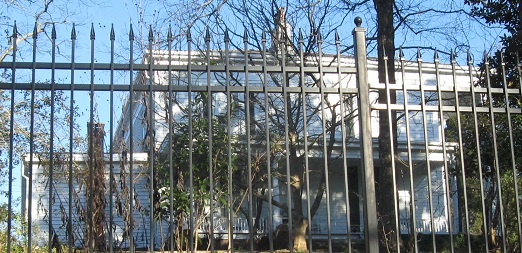
Continuing on 7th St. North for two blocks, on the left is Rosewood Manor, 1835 and on the right is Leighcrest, 1840. Rosewood Manor sits on 4.5 acres with roughly 3,000 boxwood trees and has a Greek Revival facade with a Federal influence. Like many houses in Columbus, it was built on a hill because low places were considered unhealthy. Leighcrest was originally part of a 1,000 acre estate, and still has one of the few remaining old Southern gardens laid out in a "parterre" arrangement with terraced grounds and winding walkways.
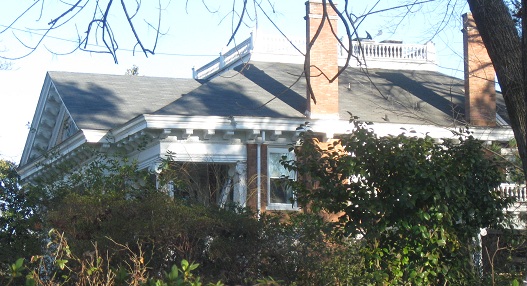
At the stop sign, to the right is the Highland House, 1902 (no, not antebellum).

The directions follow a pretty path along 7th St. North to a 4-way stop, turning right between brick pillars into Lee Park, bearing to the left twice to the top of the hill and a right turn. Turning right again on 12th St. North and once more on 12th Ave. North (quite a hike), on the left is Magnolia Hill, 1825. This raised cottage was originally a two-room log cabin with random-width pine flooring. A more formal structure was built around the cabin in the 1830s.
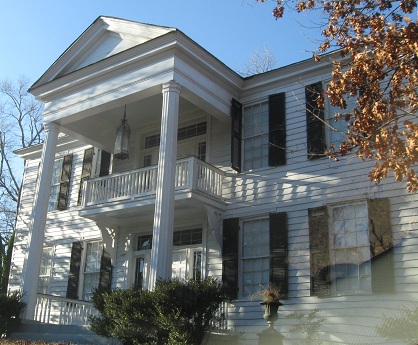
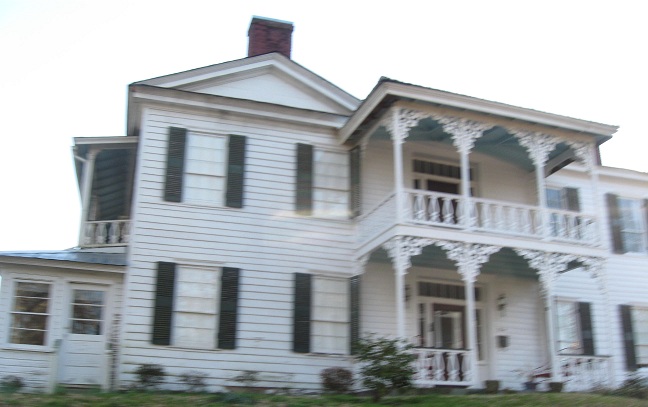
Turning right on 10th Ave., left on 10th St. North, and turning right on 7th Ave. North, facing one another are Aldan Hall, 1839 and The Oaks, 1835. Aldan Hall is a Greek Revival house, originally a townhouse of four rooms with a center stair that was enlarged by the addition of a Federal-style portico with two octagonal columns and a west wing. The Oaks is a combination of Greek Revival and Italianate architecture. Originally, its property extended over an entire city block.

Turning left onto 9th St. North and proceeding one block, on the corner is Temple Heights, 1837, combining Federal and Greek Revival features. The original servant quarters/kitchen and another kitchen built in the 1850s remain on the grounds.
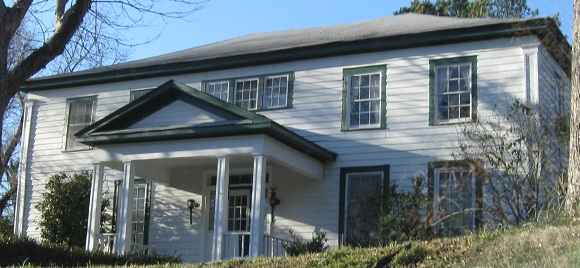

Turning right onto 6th Ave. North, one finds Beckrome, 1832, and another turn left onto 8th St. North comes to Wisteria Place, 1854 on the left corner. Beckrome, a New England-style cottage, was built by Franklin Academy's first principal, one of the founders of St. Paul's Episcopal Church (in Part 2 of the tour). Each door and window was custom made to fit the holes cut by the carpenter. Wisteria Place was built by a prominent Mississippi Democrat, William R. Cannon, who was acting governor at one time and state Democratic Convention president another.

Proceeding one block to 5th Ave. North and turning right, then left at the 4-way stop onto 7th St. North comes to Camellia Place, 1847. The camellia shrubs in the yard blossom in red, pink, and white during winter.

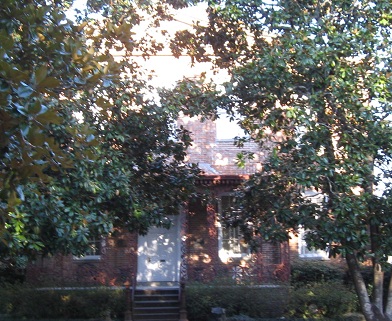
Continuing on 7th St. North, to the left on the next block is the Blewett-Harrison-Lee Home, 1847. This house was the residence of General Stephen D. Lee of the Confederacy, built by his wife's grandfather, Major Thomas Blewett.


Turning left at the traffic light onto 3rd Ave. North, proceeding two blocks to the corner of 9th St. North, to the left is Hamilton Hall, 1860 and to the right is Snowdoun, 1854. Hamilton Hall is a townhouse of mixed architectural styles because the first part was built in 1840. The earlier rear section has lower ceilings than the traditional high ceilings in the front. The carriage house at the right rear of the house is floored with 8-inch square bricks. Snowdoun was build for James Whitfield, one of Mississippi's governors, and housed Jefferson Davis as a guest during his campaign for U.S. Senate (he orated from the second-floor balcony). It is designed around an octagonal center hall, with square rooms opening off of it that have triangular closets. There are seven (!) porches, reached by jib windows that double as doors by opening out at the bottom.

Proceeding to 13th St. North, jogging left to 4th Ave. North (left followed by right), on the left is Hope Cottage, 1835 when the two middle rooms were built, although the rest of the house came around in 1849. The house was constructed entirely of 12" pine planks and the pegged, inexact-width pine flooring is still in place.
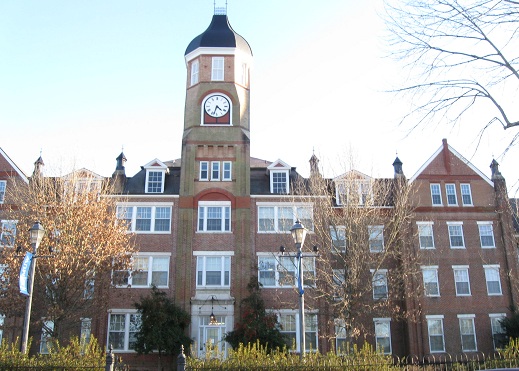
Turning right on 14th St. North, heading to the stop sign at College St., straight ahead is the Mississippi University for Women, 1884. Though postbellum (is that a word?), this is the oldest state school for women in the United States. Calloway Hall, pictured here, belongs on this page because it was the main dormitory of the Columbus Female Institute (not a state school, obviously), which was founded in 1847.


Turning right onto College St., on the left just past the 2nd traffic light are Shadowlawn, 1860 and the George Hazard Home, 1858. Shadowlawn blends Greek Revival lines with Gothic elements such as lacy arches between octagonal half columns, known as the "Columbus Eclectic" style. George Hazard lived in an Italianate raised cottage with a Tuscan-columned portico, hip-roof side extension, fluted pilasters, and pendants on the cornice brackets. Hey, I'm just reprinting what's in the pamphlet, I couldn't tell you what any of that means.

Continuing one more block to 9th St. South, turning left, on the left corner of 4th Ave. South is the Max Andrews Home, 1840, a very unassuming building that was once a school and then a stagecoach stop. It is a board-and-batten structure built in the shape of an "H," and an interesting historical footnote is that the builder's wife was one of the four women who established Memorial Day. More on that at the bottom of Part 2 of the tour, but don't skip ahead.
Continue the tour to Part 2
Back to Columbus main page
Back to Mississippi Non-Roads
Back to Non-Roads main page






















